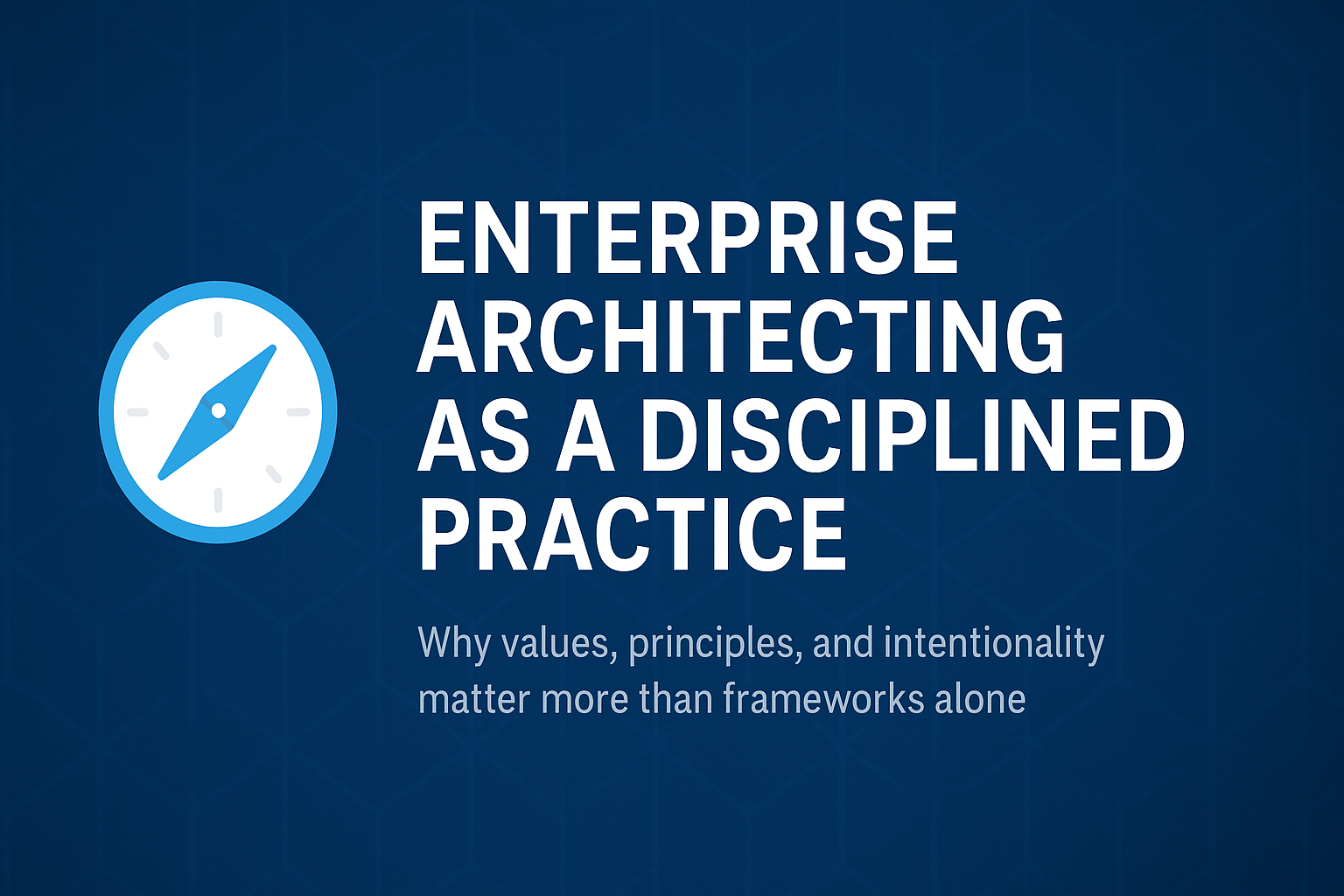Why values, principles, and intentionality matter more than frameworks alone
In many organisations, enterprise architecture is still misunderstood—seen as a title, a function, or a collection of tools and documentation. But as someone who’s been in the trenches of architecture, transformation, and technology strategy, I’ve come to see it differently.
Enterprise architecting is not just a role. It’s a discipline.
A discipline in the truest sense: a structured body of knowledge, applied with judgement, professionalism, and intention. It requires the same kind of rigour we see in fields like civil architecture or medicine—blending science and craft, context and structure, adaptability and accountability.
Beyond Frameworks and Slide Decks
Frameworks absolutely have their place. They bring common language, consistency, and structure to our work. But frameworks are not what make someone an effective enterprise architect.
What makes the difference is how we apply them:
- With critical thinking
- In context
- Guided by values
- In service of outcomes—not just outputs
I’ve seen brilliant frameworks lead to poor decisions when followed blindly. And I’ve seen lightweight, principles-driven practices deliver incredible value—because they were rooted in intentionality and designed with the business in mind.
Introducing: The Architecting Manifesto
To keep myself grounded in the right mindset—especially during high-stakes, high-ambiguity moments—I created what I call an Architecting Manifesto.
It’s a personal guide, inspired by the Agile and Software Engineering Manifestos. Not a set of commandments, but a set of reminders—to help me stay disciplined and focused when complexity, pressure, and uncertainty inevitably arise.
🔑 Core Values
- Sustainable and resilient systems over fragile, short-term fixes
- Fitness for purpose over technical idealism
- Simplicity and clarity over unnecessary complexity
- Governance that enables, not restricts
- Adaptability and evolution over rigid finality
- Architecture that listens to real-world feedback, not just assumptions
These values help ensure that architecture stays grounded in what the business actually needs, not just what we can model.
⚙️ Principles That Guide My Practice
- Design for change: Plan for inevitable shifts in business, tech, and data
- Empower delivery: Architecture should remove friction, not add it
- Plan just enough: Provide direction without stifling emergence
- Build modular and interoperable systems: Encourage scalability and agility
- Embed security and privacy early: Trust must be built in, not bolted on
- Treat data as strategic: Architecture must enable insight and lifecycle value
- Govern lightly, but clearly: Offer structure without rigidity
- Support continuous learning: Let feedback inform evolution
These aren’t theoretical. They shape how I approach platform modernisation, integration strategies, vendor selection, cloud transitions, and cross-functional collaboration.
What It Enables
Practising enterprise architecture as a discipline—not just a function—enables:
✅ Faster alignment between IT and business strategy
✅ Reduced technical debt and fragility
✅ More empowered delivery teams
✅ Better decisions made earlier
✅ Systems that evolve with change, not collapse under it
A Call to Fellow Architects
If we want enterprise architecture to be respected, impactful, and future-ready, we must hold ourselves to a higher standard—one that goes beyond tools and templates.
So I pose this to you:
- What principles guide your architecting practice?
- Have you created your own manifesto, heuristics, or compass?
- How do you maintain discipline—not just documentation—when things get complex?
Let’s move the conversation forward. The more we share, the more we sharpen each other’s thinking—and the more valuable our discipline becomes to the organisations we serve.
🧩 Intentional architecting is not just about structure—it’s about stewardship.

